If you love sinigang but find regular tamarind too sour, this recipe is perfect for you. It's a special version from Pampanga that uses guava (bayabas) instead of tamarind, giving you a sweeter, gentler soup that's still packed with flavor.
Every time I cook this at home, my kids get excited by the sweet smell of guava mixing with the savory beef soup. The meat becomes so tender it falls off the fork, and the broth is just the right balance of sweet and sour. It's my family's favorite rainy day comfort food, and I'm sure it will become yours, too.
Cultural Notes
Sinigang na Baka sa Bayabas is particularly popular in the Kapampangan region, where it's known as Bulanglang. This version of sinigang showcases the Filipino talent for using local fruits in savory dishes, creating unique flavor profiles that reflect regional biodiversity and culinary innovation.
Jump to:
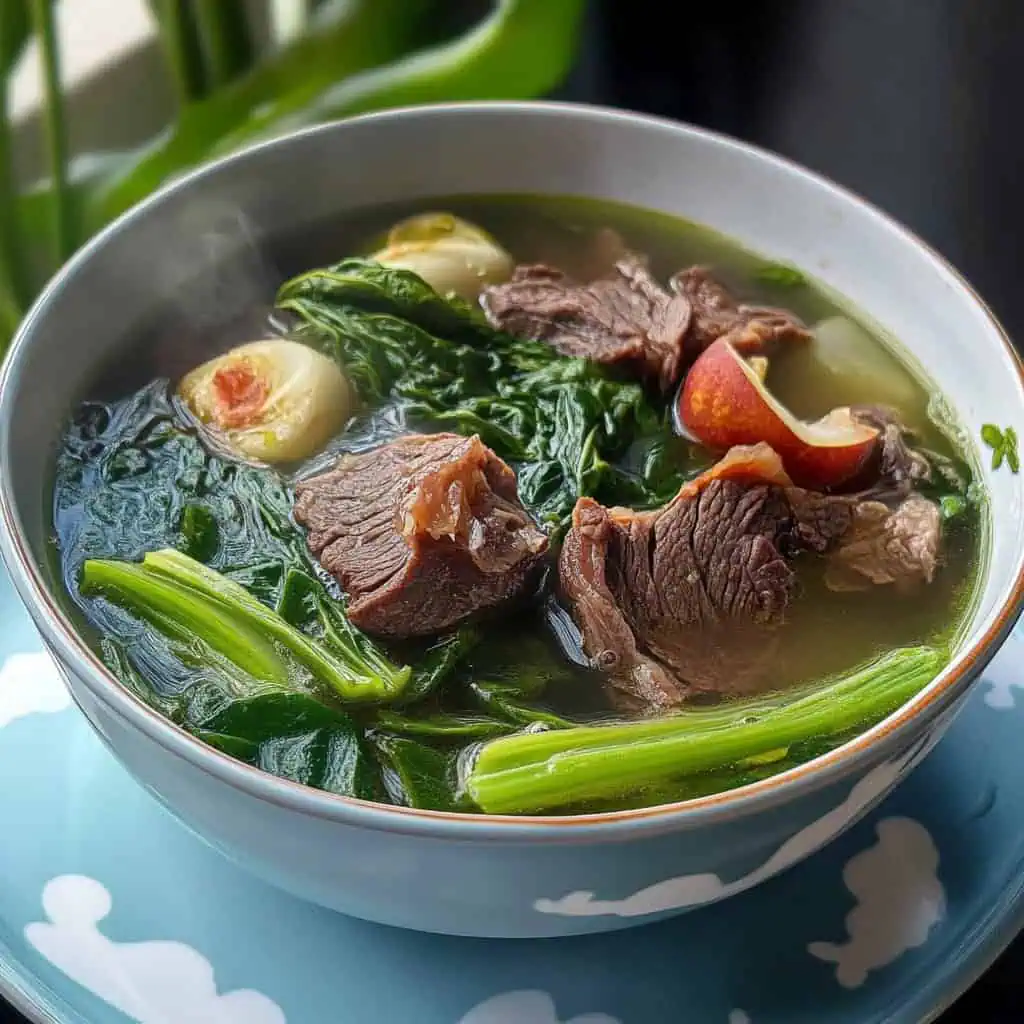
Why You'll Love This Recipe
- Unique Flavor Profile: Unlike traditional tamarind-based sinigang, the guava creates a gentler, more nuanced sourness with natural sweetness
- Fork-tender Meat: The long, slow cooking process ensures perfectly tender beef that falls apart easily
- Nutrient-rich: Packed with protein, vitamins, and minerals from the beef, guava, and vegetables
- Versatile: Can be adjusted to your preferred level of sourness and spiciness
- Budget-friendly: Uses affordable cuts of beef that become tender through slow cooking
- Perfect for Meal Prep: Tastes even better the next day
Ingredients
Each ingredient in this sinigang plays a specific role in creating its distinctive flavor. Beef shanks provide richness and become meltingly tender after slow cooking. Guavas are the star, offering a naturally sweet sourness that's gentler than tamarind.
Onions and tomatoes create a savory base, while fish sauce adds umami depth. The vegetables add texture, nutrition, and color – kangkong stays crisp even in hot soup, while optional additions like taro root contribute heartiness.
Together, they create a perfectly balanced, soul-warming soup that highlights the ingenious use of local Filipino ingredients.
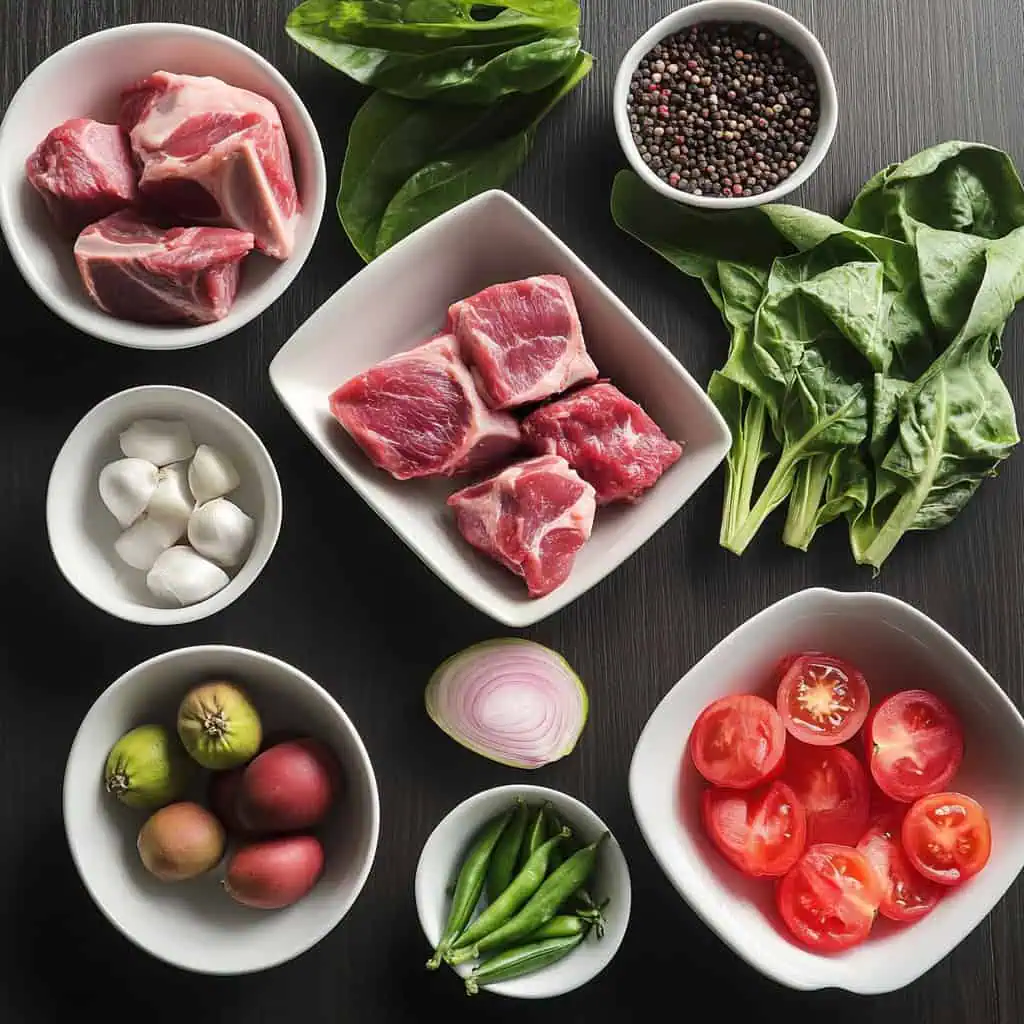
For the Broth Base:
- 2 pounds boneless beef shanks, cut into serving pieces
- 8 cups water
- 1 large onion, peeled and quartered
- 3 ripe tomatoes, chopped
- 1 pound (10-12 pieces) ripe and semi-ripe guavas, peeled and quartered
- 1 tablespoon fish sauce (patis)
- Salt and pepper to taste
For the Vegetables:
- 1 bunch water spinach (kangkong), cut into 3-inch lengths
- 2 medium green chilies (siling haba) - optional
- 2 pieces taro root (gabi) - optional
- 8-10 pieces okra - optional
- 1 medium radish (labanos), sliced - optional
Equipment
- Large heavy-bottomed pot (kaldero): Ensures even heat distribution and prevents scorching, essential for the long simmering process
- Fine-mesh strainer (salaan): Used to extract guava pulp and remove impurities from the broth
- Sharp knife (kutsilyo): For cutting meat and vegetables precisely
- Wooden spoon (sandok na kahoy): Allows gentle stirring without scratching the pot
- Ladle (sandok): For serving the soup into individual bowls
- Measuring cups and spoons: For precise ingredient portions
- Cutting board: Provides a clean surface for preparing ingredients
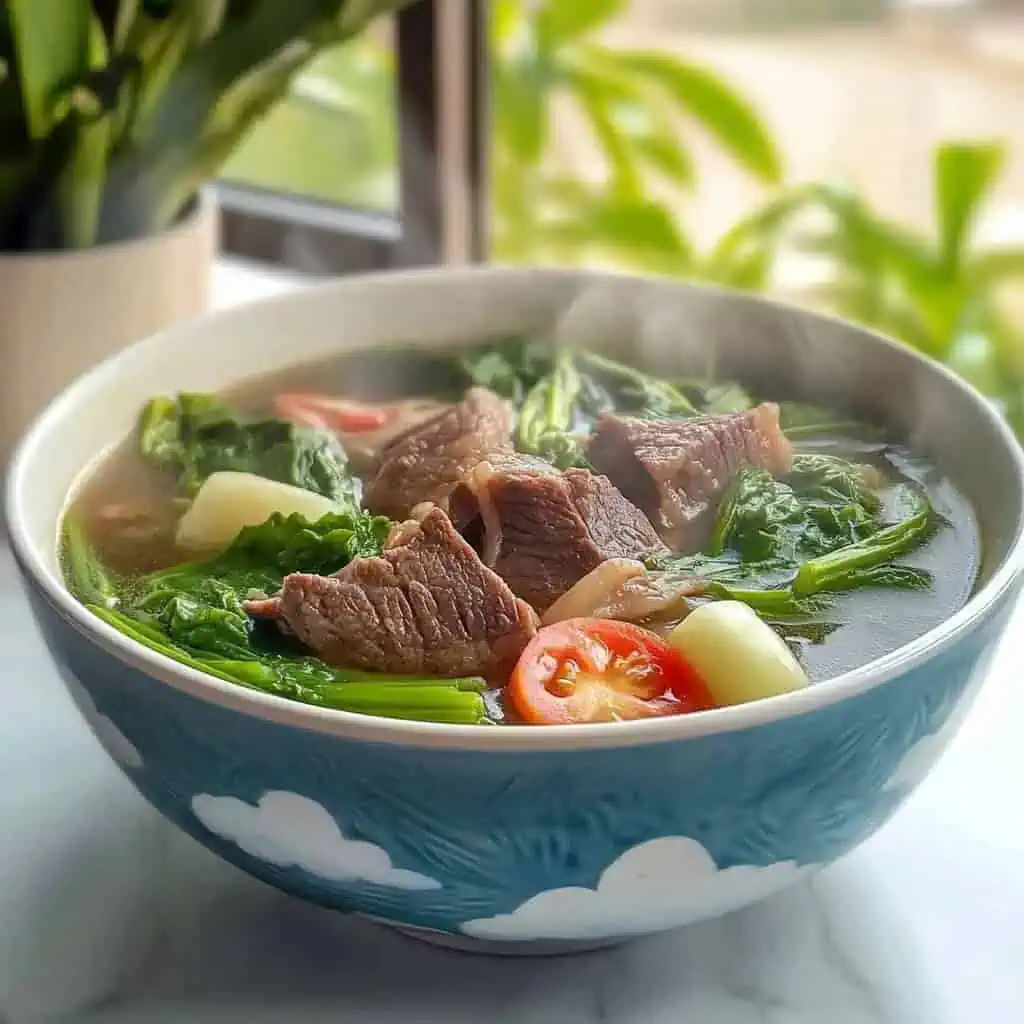
How To Make
- Place beef shanks in a large pot and add 8 cups of water. Bring to a boil over medium-high heat.
- Once boiling, skim off the gray foam that rises to the surface. This step is crucial for a clear, clean-tasting broth.
- Add quartered onion and fish sauce to the pot. Reduce heat to low, cover, and simmer for 1½ to 2 hours, or until meat is fork-tender.
- While the meat is cooking, prepare the guavas: peel them and cut into quarters. Scoop out all seeds into a bowl, add 1 cup of water, and mash with the back of a spoon to release flavor. Strain this mixture and reserve the liquid (guava juice). Discard seeds.
- When meat is tender, add chopped tomatoes, guava pieces, and the reserved guava juice. Simmer together for 7-10 minutes until guavas soften.
- For the kangkong, discard the bottom 2 inches of stalks. Cut the rest into 3-inch pieces, separating leafy parts from stalks. Add stalks to the pot first and cook for 1 minute, then add leafy parts and cook for just 30 seconds until bright green but still crisp.
- Season with salt and pepper to taste. Serve hot in bowls, with rice and patis (fish sauce) on the side.

Tips from Lola's Kitchen
- Choose guavas that give slightly when pressed for optimal ripeness and flavor
- Don't discard the beef fat as it adds tremendous flavor to the broth
- Add guava gradually and taste as you go - different varieties have varying levels of sourness
- For tough beef cuts, add a thumb-sized piece of green papaya to naturally tenderize the meat
- Use both ripe and semi-ripe guavas for the perfect balance of sweetness and tartness
- Simmer on low heat for the best flavor development and tender meat
- Skim the broth regularly during the initial boiling for a clearer soup
- Add vegetables in stages according to their cooking times to prevent overcooking
Substitutions
- Beef Shanks: Substitute with beef brisket, short ribs, or spare ribs for equally delicious results
- Fresh Guava: In a pinch, use guava powder (adjust amount to taste) though fresh is always best
- Kangkong: Replace with spinach, pechay (bok choy), or kamote (sweet potato) tops
- Fish Sauce: Substitute with salt (adjust to taste) if fish sauce is unavailable
- Fresh Tomatoes: Canned diced tomatoes will work if fresh aren't available
- Taro Root: Substitute with potatoes for a similar starchy component
Troubleshooting
- Tough Meat: Continue cooking on low heat until tender; add green papaya to help tenderize
- Too Sour: Add more water or a small piece of peeled potato to absorb excess sourness
- Too Sweet: Balance with additional fish sauce or calamansi juice
- Cloudy Broth: Skim surface more frequently during initial boiling stage
- Vegetables Too Soft: Add them only in the final few minutes of cooking
- Not Sour Enough: Use slightly less ripe guavas or supplement with a squeeze of calamansi juice
Storage & Reheating
- Refrigerator: Store in an airtight container for 3-4 days
- Freezer: Freeze for up to 3 months (store broth and vegetables separately for best results)
- Reheating on Stovetop: Heat on medium until just simmering, avoiding boiling which can toughen the meat
- Microwave Reheating: Heat in 2-3 minute intervals, stirring between each interval
- Add fresh kangkong when reheating for the best texture and bright green color
- The flavor improves over time, making this dish excellent for meal prep
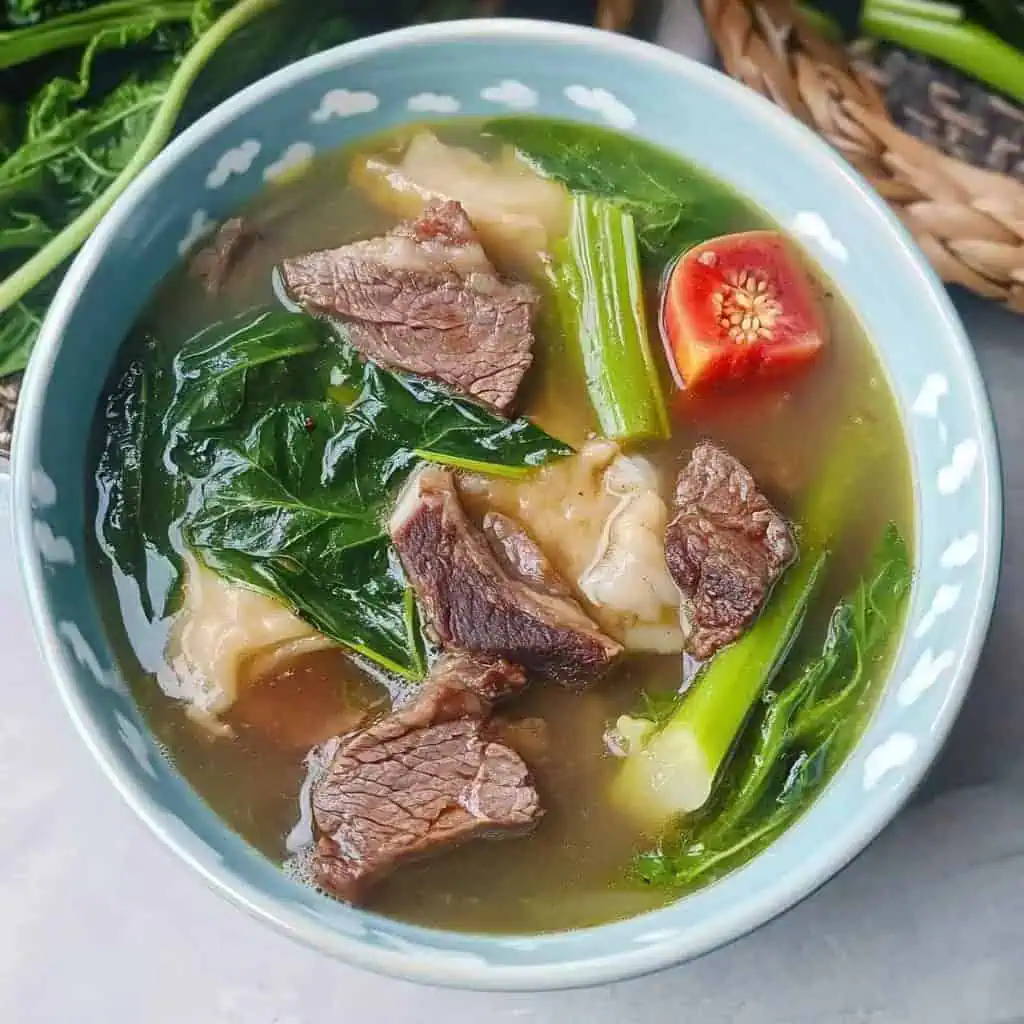
FAQ
Can I make this in a pressure cooker?
Yes, you can reduce cooking time to about 45 minutes at high pressure for the beef. Add the vegetables after releasing pressure and simmer until tender.
Why is my broth not sour enough?
Guava varieties differ in sourness. Use less ripe guavas for more tartness or supplement with calamansi juice to increase acidity.
Can I make this ahead for a party?
Absolutely! In fact, the flavors develop wonderfully overnight. Prepare the soup base with meat a day ahead, then add fresh vegetables when reheating.
How do I know when the beef is properly tender?
It should easily break apart with gentle pressure from a fork. If there's resistance, continue cooking.
Can I use frozen guava?
Yes, though fresh guavas provide better flavor. If using frozen, you may need to adjust quantities since freezing can alter the sourness.
Is this recipe keto-friendly?
Yes, with modifications. Omit the taro root and limit guava amounts. The vegetables and beef are low-carb friendly.
What makes this different from regular sinigang?
Traditional sinigang uses tamarind for sourness, while this version uses guava for a milder, sweeter sour profile that many people (especially children) find more appealing.
Can I add other vegetables?
Absolutely! String beans (sitaw), eggplant (talong), daikon radish, and corn are all traditional additions.
Related
Looking for other recipes like this? Try these:
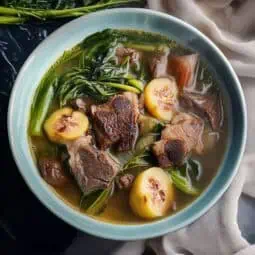
Sinigang na Baka sa Bayabas (Filipino Beef and Guava Sour Soup)
Equipment
- Large heavy-bottomed pot (kaldero) For even heat distribution and preventing scorching
- Fine-mesh strainer (salaan) To extract guava pulp and remove impurities
- Sharp knife (kutsilyo) For cutting meat and vegetables
- Wooden spoon (sandok na kahoy) For gentle stirring without scratching the pot
- Ladle - sandok For serving
- Measuring cups and spoons (Panukat) For precise ingredient portions
Ingredients
For the Broth Base:
- 2 pounds boneless beef shanks Litid ng baka, cut into serving pieces
- 8 cups water Tubig
- 1 large onion Sibuyas, peeled and quartered
- 3 ripe tomatoes Kamatis, chopped
- 1 pound 10-12 pieces ripe and semi-ripe guavas, peeled and quartered Bayabas
- 1 tablespoon fish sauce Patis
- Salt Asin at Paminta to taste
For the Vegetables:
- 1 bunch water spinach Kangkong, cut into 3-inch lengths
- 2 pieces medium green chili Siling haba - optional
- 2 pieces taro root - optional Gabi
- 8-10 pieces okra - optional
- 1 medium radish Labanos, sliced - optional
Instructions
- Start by placing your beef shanks in a large pot and add 8 cups of water. Set your stove to medium-high heat and bring the water to a boil. While the water is heating up, peel and quarter your onion, and chop the tomatoes.
- Once the water is boiling, you'll see some gray foam floating on top - use a spoon to remove this foam. This keeps your soup clear and clean-tasting. After removing the foam, add your quartered onion and fish sauce to the pot.
- Turn the heat down to low so the soup is gently simmering. Cover the pot and let it cook for about 1½ to 2 hours. You'll know the meat is ready when you can easily pierce it with a fork.
- While the meat is cooking, prepare your guavas. Peel them and cut each one into quarters. Using a spoon, scoop out all the seeds into a bowl. Add 1 cup of water to the seeds and mash them with the back of your spoon - this releases extra guava flavor. Pour this mixture through a strainer and save the liquid - this is your guava juice. Throw away the seeds.
- When the meat is tender, add your chopped tomatoes, the guava pieces, and the guava juice you made. Let everything simmer together for about 7-10 minutes until the guavas become soft.
- For the kangkong, cut off and throw away the bottom 2 inches of the stalks. Cut the rest into 3-inch pieces, keeping the leafy parts separate from the stalks. Add the stalks to the pot first and cook for 1 minute. Then add the leafy parts and cook for just 30 seconds until they turn bright green but are still crisp.
- Give your soup a taste and add salt and pepper until it's just right. Serve your sinigang hot in bowls, with rice and patis (fish sauce) on the side.
Tips from Lola's Kitchen
- Choose guavas that give slightly when pressed for optimal ripeness
- Don't discard the beef fat - it adds flavor to the broth
- Add guava gradually and taste as you go - different varieties have varying levels of sourness
- If using tough beef cuts, add a thumb-sized piece of green papaya to help tenderize the meat
- Save the meat bones for making bone broth later
Nutrition
The Story Behind Sinigang na Baka sa Bayabas
Sinigang na Baka sa Bayabas has its roots in the fertile region of Pampanga, often called the Culinary Capital of the Philippines. In this area, where guava trees grow abundantly in backyards and along riverbanks, local cooks discovered that the fruit could be a wonderful alternative to the usual tamarind in their beloved sour soup.
What makes this version special is how it came from making the most of what was available. In the past, when tamarind wasn't in season or hard to find, Kapampangan home cooks would look to their backyards where guava trees offered their fruit year-round. They found that guava created a gentler, slightly sweet sourness that many people, especially children, preferred over the strong tang of tamarind.
In Pampanga, this dish is also known as "Bulanglang," and it shows how creative Filipino cooks can be with local ingredients. While the more common tamarind-based sinigang spread throughout the Philippines, this guava version remained a regional specialty, passed down through generations of Kapampangan families who pride themselves on their unique cooking traditions.
The dish perfectly represents Filipino ingenuity in cooking. Instead of just using guava as a sweet fruit, clever cooks found that its natural tartness could create a delicious savory soup. They discovered that combining both ripe and slightly unripe guavas gave the best flavor – the ripe ones for sweetness and the unripe ones for that perfect sour note.
Today, this recipe is gaining popularity beyond Pampanga as more people discover its milder, more balanced taste. It's especially loved during the guava season from August to December, when the fruits are at their sweetest and most flavorful. Many Filipino families now make both versions – the classic tamarind sinigang and this special guava version – depending on their mood and what's available in their local market.
What started as a practical solution to use locally available ingredients has become a beloved dish that showcases the diversity of Filipino regional cuisine. It's a perfect example of how Filipino cooking continues to evolve while keeping its deep connections to local ingredients and traditional cooking methods.
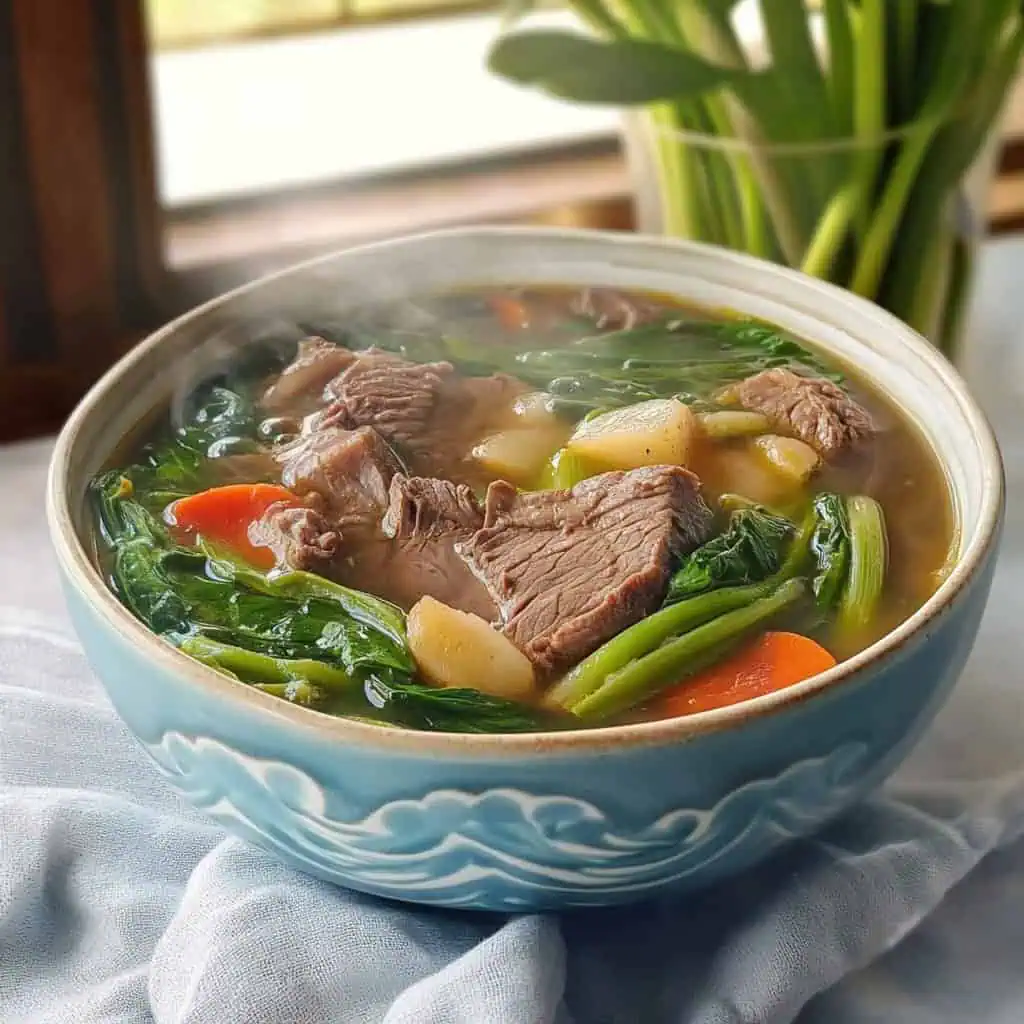

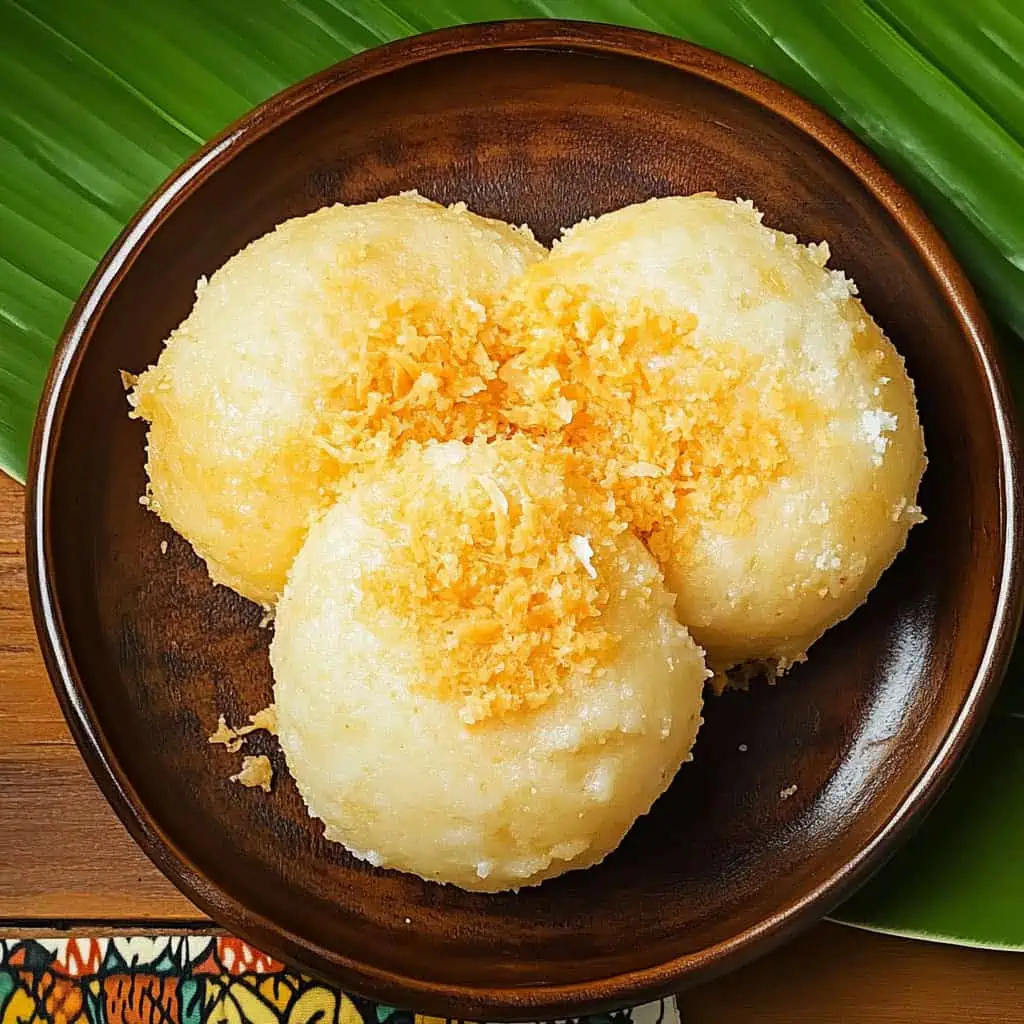
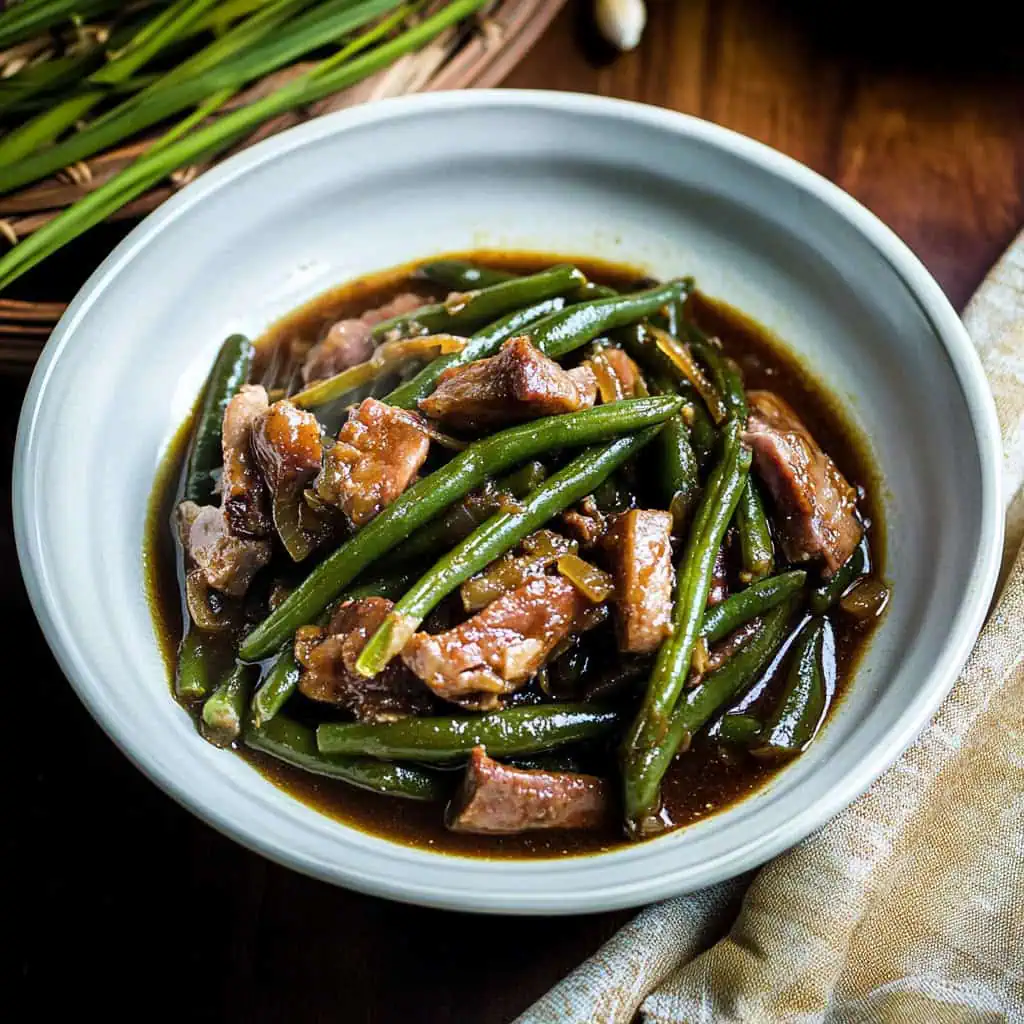

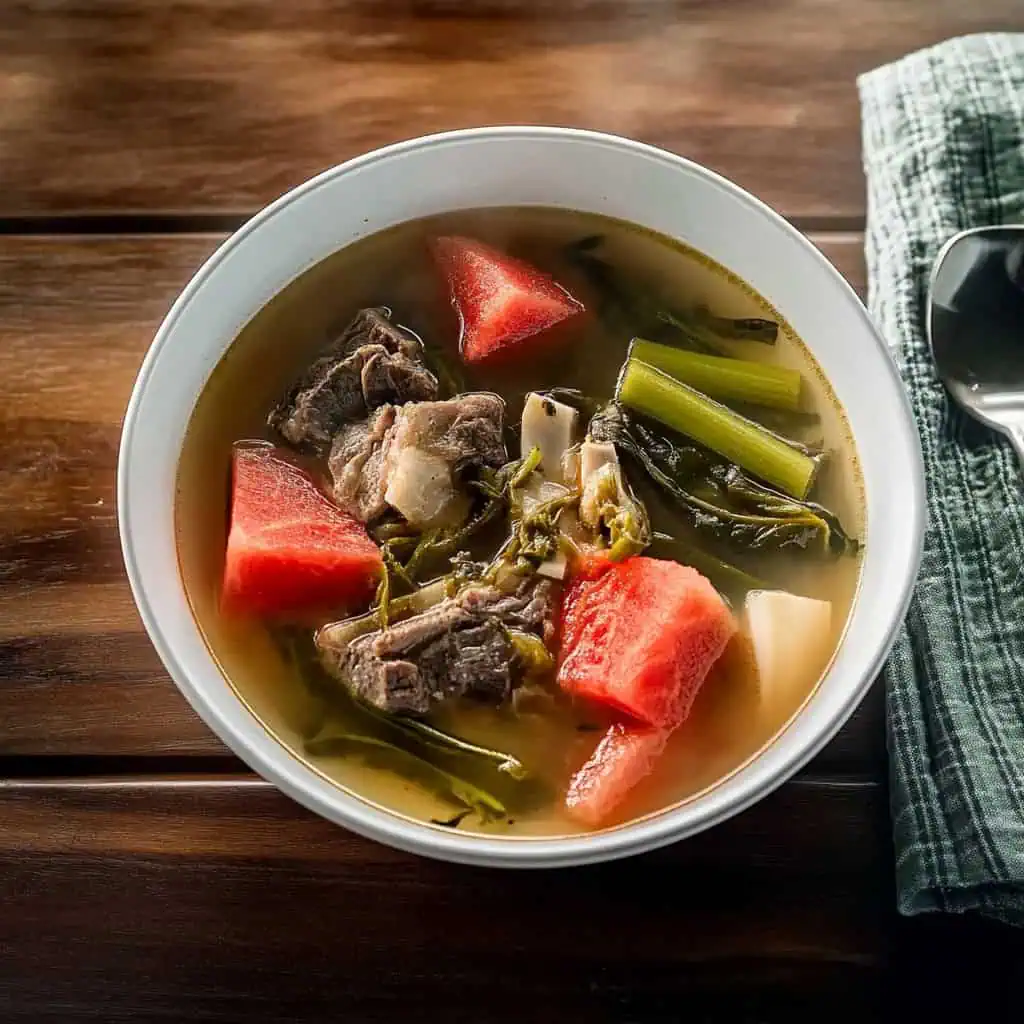

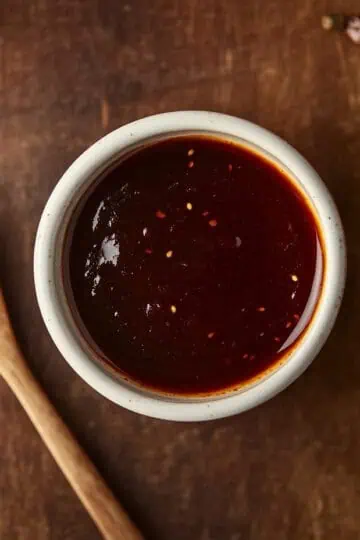

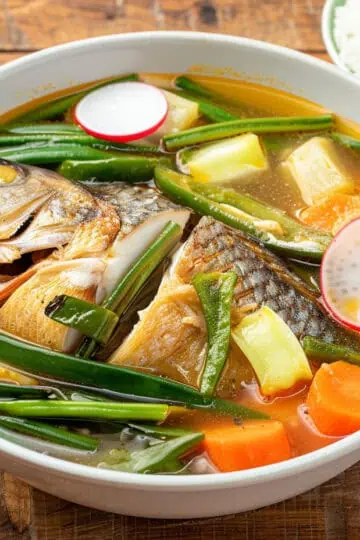
Comments
No Comments